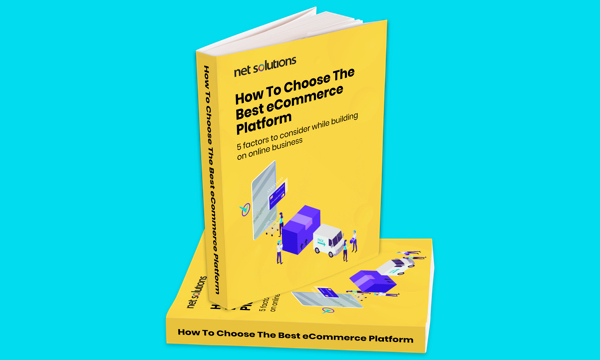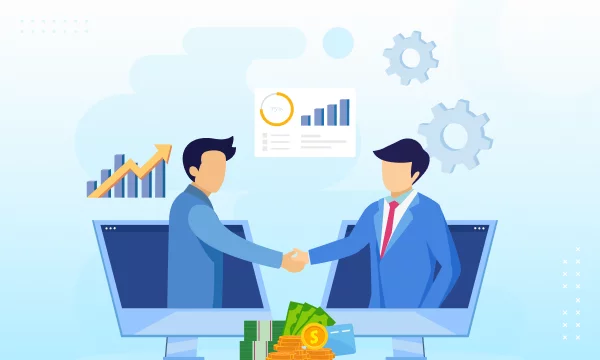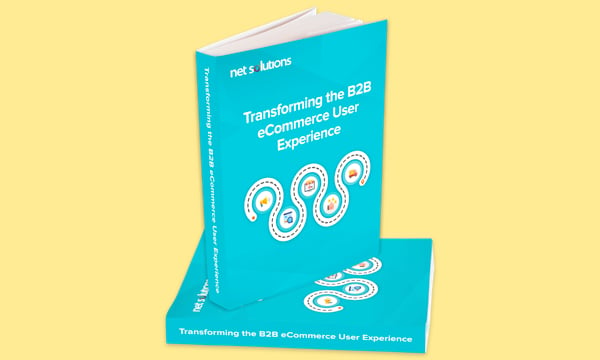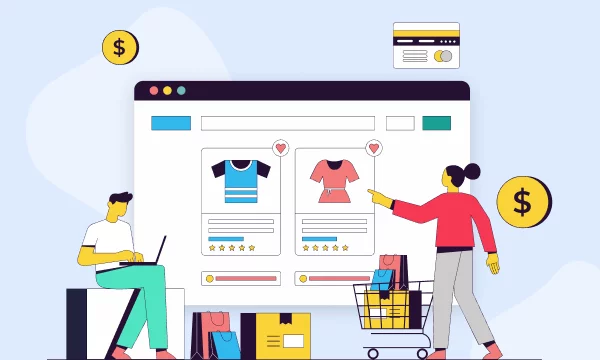A quality eCommerce website is at the core of any retail business that sells products online. Cutting-edge technology can help you to stand out, increase conversions, and improve the customer experience to build loyalty and ensure your long-term success.
Whether you’re looking to launch a brand new eCommerce website or hoping to improve the functionality of an existing site, a well-written Request for Proposal (RFP) can help you ask the right questions and find the best outsourcing partner for your eCommerce project.
This blog post will cover all the essentials you should include in your RFP and key steps toward writing an RFP that will help you achieve your business goals.
What Should Be Included in an eCommerce RFP?
Structuring your RFP clearly and logically will help potential vendors understand your business needs and whether their services and competencies match your eCommerce requirements.
Every RFP should contain the following six key elements:
- Company Overview
- Project Overview
- Project Scope
- RFP Project Timeline
- Vendor Selection Process & Criteria
- Questions for the Vendor
Now we’ll go into detail about what each section should include. That way, you can create an RFP that helps you get bids from the right vendors and build the ideal eCommerce solution for your business.
Company overview
Explain what your company does and its target audiences, identifying the key stakeholders within your organization who are connected to this project.
Things to include in your company profile:
- Company background
- Target market
- Problems you solve for those who purchase your products
- Company leadership and stakeholders
Project overview
A clear, easy-to-follow project overview will help potential vendors understand what you hope to accomplish with your eCommerce project. Understanding your business objectives and deliverables will help them identify accurate pricing.
What does your eCommerce project require? Are you building an entirely new e-commerce platform? Are you re-platforming an existing site based on a SaaS eCommerce platform (e.g., a Shopify site or a custom-built site) to make it a custom site?
Which eCommerce features do you require? Do you need to build new payment gateways? Do you require upgrades to improve a poor customer experience? API integration?
These are a few examples of the approach you might take toward optimization. Including anything you’ve identified as integral to your eCommerce project is essential.
Things to include in your project overview:
- Overall project goals
- Features and functionality you’re hoping to achieve
- User personas if you have them handy
- Risks that could potentially affect the outcome of your project
- Marketplaces you serve (or intend to serve)
- The eCommerce SaaS platform you’re currently using (if applicable) and whether you want to change to a new eCommerce platform
- Any preferences you might have for eCommerce platforms to use as the foundation for your custom website (such as Magento)
Project scope
To offer a realistic price quote and provide an accurate time-to-completion estimate, potential partners will need to understand the scope of your project. This is where you list the services you require in as much detail as possible.
Things to include in your project scope:
- Replatforming needs
- Number of pages
- Functionality required
- Degree of customization needed
- Any requirements beyond design and development (such as project management, Quality Assurance, etc.)
- Anything else that will help software vendors understand your needs
RFP and project timeline
When do you hope to launch? Is your timeline flexible or fixed?
Potential outsourcing partners can tell you whether your timeline is realistic based on your deliverables.
Things to include in your project timeline:
- Launch date
- Anything that might impact your target launch date
- How flexible your launch date is (if at all)
Vendor selection process and criteria
What are your evaluation criteria for potential vendors? Are you looking for expertise in a specific area? Is price your most important factor? List all your requirements so prospective partners can showcase their talents and tailor their offerings to match your needs.
Things to include in your vendor selection criteria:
- Top priorities (e.g., experience, budget)
- Any additional information about how you plan to prioritize different factors
Questions for the vendor
The final section we recommend including in an eCommerce RFP is a questionnaire that digs deep to solicit answers from potential candidates interested in building your online store for you.
The questions will address important areas, such as:
- General information about the vendor
- Platform, design, customization, and UX experience
- IT, hosting, and security
- Architecture and integrations
- Marketing
- Product management
- B2B capabilities
- eCommerce analytics and reporting
- Checkout and payment
- Omnichannel sales and support
- Customer support
Read on to see some of the most powerful questions you can ask in each category—those that will help you find the ideal vendor to build your digital commerce store.
Hire an eCommerce outsourcing partner with decades of experience!
Most Common Vendor Questions in an eCommerce RFP
Below we’ve listed over 50 questions you can include in your eCommerce RFP. You won’t include them all, but these questions will get you thinking about what to ask. They might even spark a few new ideas relevant to your project.
1. Company overview
- How many years have you been in business?
- What is your experience in eCommerce?
- What are your working hours, and can you adapt to our time zones?
- Who are some clients you’ve worked with in the eCommerce space? Please provide case studies.
- What sets you apart from your eCommerce design and development competitors?
2. Platform design, customization, and UX
- What is your approach to User Experience (UX) design?
- What third-party developers and designers do your products integrate with?
- Can we install web fonts on our website?
- How do you make your designs cross-platform compatible, including mobile compatibility across various devices?
- Can we provide mobile-optimized checkout for our customers?
- Can you create websites that are ADA- and GDPR-compliant?
3. IT, hosting, and security
- Do the platforms you build use the ISO/IEC 27001:2013 certification (the industry standard)?
- Is your software PCI-compliant?
- How do you support federated identity and single sign-on (SAML/OpenID/OAuth/etc)?
- How do you define your security roles? What restrictions can we manage on our end?
- How do you protect sensitive customer data to secure our customers and comply with GDPR and other requirements?
- How do you audit data access and changes?
- How do you address and manage security vulnerabilities?
- How do you handle patching and other types of security maintenance?
4. Architecture and integrations
- Which eCommerce platforms do you prefer to use and why?
- Do the platforms you use provide a foundation for multi-channel commerce?
- Do the websites you build integrate with other systems (in-house and third-party)? Please provide examples.
5. Marketing
- What native functionality can you create that allows promotions to pop up based on user interests and behavior?
- Can you handle cart-level discounts, shipping promotions, bundled discounts, coupons, and other campaigns?
- Can our customers add gift messaging to their orders?
- Can we flag abandoned shopping carts for follow-up messages?
- Can we support customer reviews?
6. Product management
- What is your approach to product management?
- Which software methodologies do you employ, such as Agile Scrum or others?
- How do you communicate with in-house teams and key stakeholders?
- What are your strategies for working asynchronously?
- Can you adapt your work hours to different time zones if that is what we need?
7. B2B capabilities
- What is your experience working with B2B eCommerce stores?
- Can we support dynamic pricing with the website you will build?
- Can we support bulk orders and set price and quantity limits?
- Can we work with price lists?
- Can we display different product lists and advertisements for B2B and B2C shoppers?
8. Analytics and reporting for eCommerce
- Which eCommerce analytics solutions do you prefer, and how do they integrate with third-party apps?
- How is reporting handled for sales, merchandising, customer Lifetime Value (LTV), and other factors?
- Can we have a dashboard that features essential metrics? Which metrics can we highlight?
- What tax reports can we generate?
- What shipping and fulfilment reports are available?
- What other analytics do you consider essential for eCommerce, and which ones you can integrate into our website?
9. Checkout and payment
- Can we migrate our current payment gateway to the new platform?
- Do you support mobile-optimized, single-page checkout?
- Can customers use guest checkout if they don’t want to create an account?
- Can customers with accounts store credit card information and other payment info?
- Which payment platforms do you integrate with? Which payment methods are possible?
- Can you create a system that calculates taxes and shipping costs?
- Will our website be able to handle shipping from different warehouses across different states, provinces, or regions?
10. Omnichannel
- What third-party marketplaces can we integrate with?
- Can users check out using Facebook, Google, or Apple logins?
- What channels can we provide for inquiries (e.g., WhatsApp, Facebook Messenger, and other social media)?
- Can we interface with Instagram marketplace or Pinterest?
- What will the centralized dashboard look like that connects all the various channels we use to interact with customers?
11. Customer Support (CS)
- Which CRMs can our eCommerce site integrate with, and how do they interface with Customer Support?
- What channels can customers use to follow up on CS inquiries?
- What add-ons can you include on our website to ensure high-quality, omnichannel customer support?
Step-by-Step: The eCommerce RFP Process and Timeline
When creating an RFP for eCommerce software or websites, avoid the temptation just to start writing.
Creating an eCommerce RFP requires meetings with key stakeholders and careful consideration of your website’s functionality and business needs.
The four-step process that follows will empower you to create a clear, effective RFP, evaluate respondents thoroughly, and select the very best RFP responses to add to your shortlist for interviews.
Step 1: Prepare and plan for re-platforming
Set up meetings with key stakeholders to determine what requirements you’ll need for your new eCommerce website. During those meetings, you should consider the following before writing your RFP.
Key items to consider at the planning stage:
- Software requirements
- Development, design, product management, and maintenance services needed
- Your project timeline
- Budget
- Evaluation criteria, including your method for bid scoring
How long it takes: 1-3 weeks
Step 2: Draft the eCommerce RFP
Writing, editing, and hashing out the details of your eCommerce RFP will be an iterative process where you solicit input from stakeholders in various departments and leadership at your organization.
As you write your RFP, always keep your target audience in mind. Carefully consider the problems you hope to solve for them and how your platform can simplify their customer journey.
Key items to include in the RFP:
- Executive summary
- Company name and information
- Project summary
- Project scope, budget, and time frame
- Bid submission deadline
- Key questions for each vendor (see above)
How long it takes: 1-2 weeks
Step 3: Finalize and issue your eCommerce RFP
Once you’ve finalized the RFP, it’s time to select the outsourcing teams you would potentially like to work with. You can research on your own to find a good fit or use an RFP network to distribute the RFP to potential suppliers automatically.
Key steps to RFP finalization and distribution:
- Identify companies to solicit bids from
- Create a process for receiving and evaluating RFPs, including a scoring system
- Make a plan for answering questions from vendors
How long it takes: 1-2 weeks
Step 4: Review vendor proposals and award the contract
After your deadline has passed, it’s time to evaluate the bids you received using the scoring process you’ve established. You can use an Excel spreadsheet with a weighted criteria matrix to identify your top candidates.
Once you’ve got a shortlist, it’s time to set up interviews and ask the tough questions. Review our ultimate outsourcing to see a step-by-step process for hiring a software development company.
Steps for reviewing RFP proposals:
- Score each proposal and select the top candidates
- Schedule interviews
- Write and sign contracts
- Let all potential vendors on your shortlist know you’ve decided.
How long it takes: 1-4 weeks
The timeframe for each of these steps will vary depending on your organization’s size and your eCommerce website’s desired functionality.
Be sure to allow enough time to create a thorough RFP process since this will set the stage for creating a quality online store.
Need a Customized eCommerce solution?
Net Solutions has been designing customized eCommerce websites custom eCommerce solutions for decades. We help B2C and B2B eCommerce companies convert visitors into paying customers and build lifelong loyalty.
We’ve worked with eCommerce giants like American Golf and Euro Car Parts and eCommerce startups with serious potential. Set up a free consultation today and discover what we can do for your business.
Frequently Asked Questions
1. What is an RFP in eCommerce?
An eCommerce Request for Proposal (RFP) is a tool that helps online retailers select the best possible vendor to build a custom eCommerce website.
You can send your RFP to vendors worldwide, asking them to identify their strengths, skills, approach to project management, ability to meet your budget, and other essential factors. It should clearly describe the scope of your project and what you hope to accomplish with your website.
2. What format should an RFP be in?
You can use any format you’d like to solicit bids from potential vendors, but make sure it’s easy to complete and submit electronically.
An MS Word document or a custom-built online form will work fine. You can use companies like FormSwift to create online forms or download our free RFP template and modify it to fit your needs.
3. What are the advantages and disadvantages of an RFP?
A well-written RFP has many advantages. It can streamline the vendor search process, allowing you to evaluate many talented software development outsourcing firms. Using objective scoring criteria, it will also allow you to make objective decisions.
One disadvantage of using an RFP is that it’s time-consuming to create. It takes a great deal of thought, discussion, and consideration to build a quality RFP. This isn’t necessarily bad because it allows teams to think about their overall eCommerce strategy, but it’s not an overnight process.
Another potential disadvantage of using an RFP is that you don’t know what you don’t know. Perhaps there are eCommerce solutions you failed to list in your project scope because you had no idea they existed.
A good software vendor can think outside the box and introduce you to creative solutions you’ve never heard of. Be sure to work with a vendor showing ingenuity and innovative thinking.
4. What are the benefits of an eCommerce RFP template?
An RFP template will help guide you when drafting your RFP and ensure that you don’t skip essential elements that each RFP must have (e.g., scope, budget, and project details).
Of course, when working with an RFP template, adapt it to your individual needs. There may be questions or information that the template lists, but upon further consideration, you may decide that this information doesn’t apply to your project. Don’t be afraid to remove items that aren’t relevant to what you’re hoping to accomplish.












